G. M. R. I. Godaliyadda
A Novel Algorithm for Digital Lithological Mapping-Case Studies in Sri Lanka's Mineral Exploration
Apr 01, 2024Abstract:Conventional manual lithological mapping (MLM) through field surveys are resource-extensive and time-consuming. Digital lithological mapping (DLM), harnessing remotely sensed spectral imaging techniques, provides an effective strategy to streamline target locations for MLM or an efficient alternative to MLM. DLM relies on laboratory-generated generic end-member signatures of minerals for spectral analysis. Thus, the accuracy of DLM may be limited due to the presence of site-specific impurities. A strategy, based on a hybrid machine-learning and signal-processing algorithm, is proposed in this paper to tackle this problem of site-specific impurities. In addition, a soil pixel alignment strategy is proposed here to visualize the relative purity of the target minerals. The proposed methodologies are validated via case studies for mapping of Limestone deposits in Jaffna, Ilmenite deposits in Pulmoddai and Mannar, and Montmorillonite deposits in Murunkan, Sri Lanka. The results of satellite-based spectral imaging analysis were corroborated with X-ray diffraction (XRD) and Magnetic Separation (MS) analysis of soil samples collected from those sites via field surveys. There exists a good correspondence between the relative availability of the minerals with the XRD and MS results. In particular, correlation coefficients of 0.8115 and 0.9853 were found for the sites in Pulmoddai and Jaffna respectively.
Endmember Extraction Algorithms Fusing for Hyperspectral Unmixing
Feb 06, 2024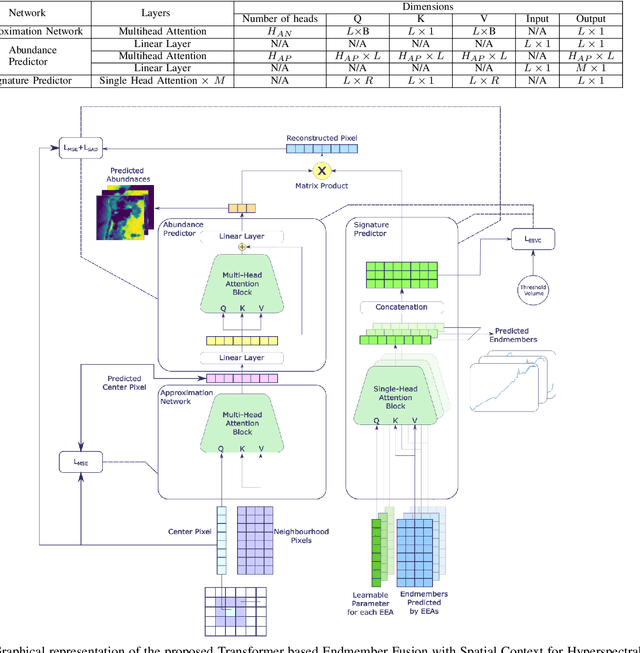
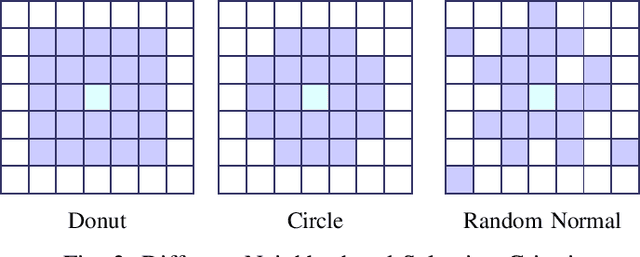
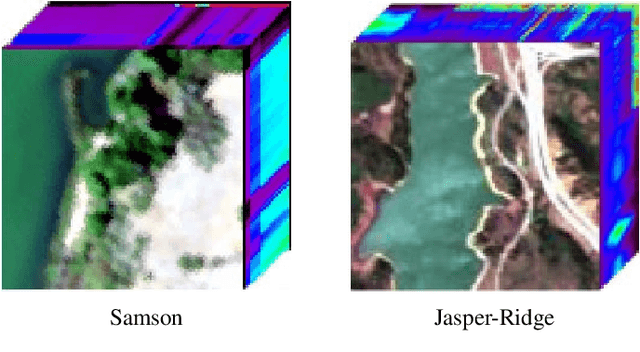
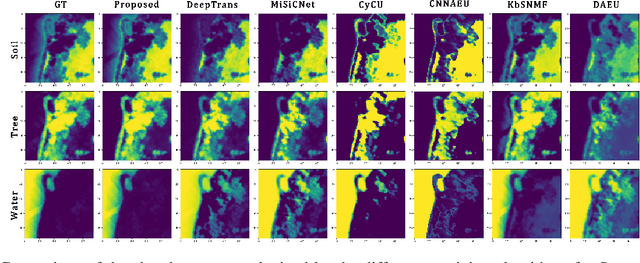
Abstract:In recent years, transformer-based deep learning networks have gained popularity in Hyper-spectral (HS) unmixing applications due to their superior performance. The attention mechanism within transformers facilitates input-dependent weighting and enhances contextual awareness during training. Drawing inspiration from this, we propose a novel attention-based Hyperspectral Unmixing algorithm called Fusion (Fusion). This algorithm can effectively fuse endmember signatures obtained from different endmember extraction algorithms, surpassing the limitations of classical HS Unmixing approaches that rely on a single Endmember Extraction Algorithm (EEA). The Fusion network incorporates an Approximation Network (AN), introducing contextual awareness into abundance prediction by considering neighborhood pixels. Unlike Convolutional Neural Networks (CNNs), which are constrained by specific kernel shapes, the Fusion network offers flexibility in choosing any arbitrary configuration of the neighborhood. We conducted a comparative analysis between the Fusion algorithm and state-of-the-art algorithms using two popular datasets. Remarkably, Fusion outperformed other algorithms, achieving the lowest Root Mean Square Error (RMSE) for abundance predictions and competitive Spectral Angle Distance (SAD) for signatures associated with each endmember for both datasets.
A Novel Handover Mechanism for Visible Light Communication Network
Jun 24, 2023Abstract:Visible light communication (VLC) is an emerging technology and considered as an alternative to overcome some of the disadvantages of radio frequency communication technology in an indoor environment. However, the line of sight nature of the technology limits the user mobility and create new challenges to provides seamless network coverage under user mobility scenarios. In VLC multi access points and multi cell based network, co channel interference (CCI) between neighbor cells limits the overall performance. Therefore, by following the already existing VLC handover systems, this statistical parameter based novel handover method is designed. This paper proposes a handover mechanism for indoor VLC systems by introducing cell ID bits and statistical kurtosis values of the cell ID waveforms as metric for the handover initiation. As advantage of the method, effects from the CCI can be eliminate when measuring signal strengths in the signal overlapping cell boundary area. Also the handover criteria are adoptive to the different ambient lighting conditions compared to existing pre-configured light intensity threshold based handover systems. With the use of bit error rate (BER), the experiment results showed that Kurtosis value of the cell ID waveforms can be used as metric to initiate network handover in indoor VLC systems.
Laser Ranging Based Intelligent System for Unknown Environment Mapping
Feb 01, 2023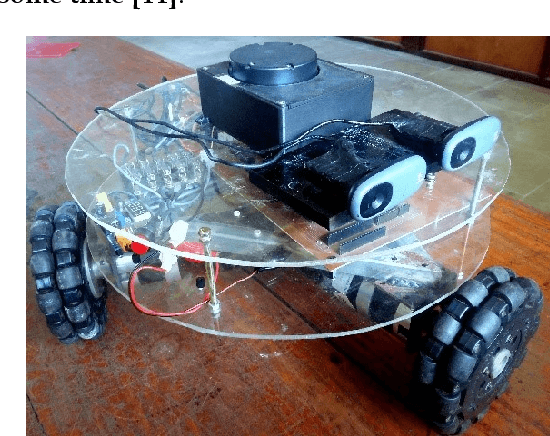
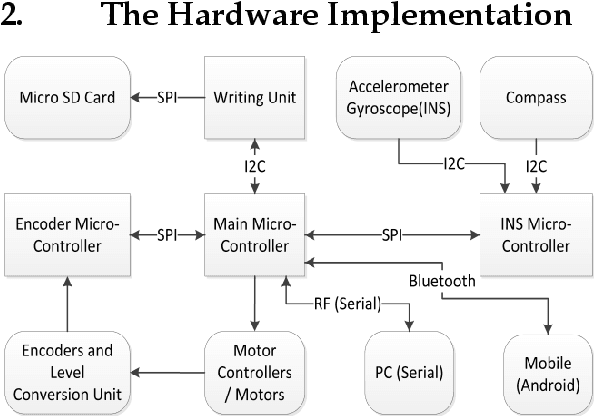
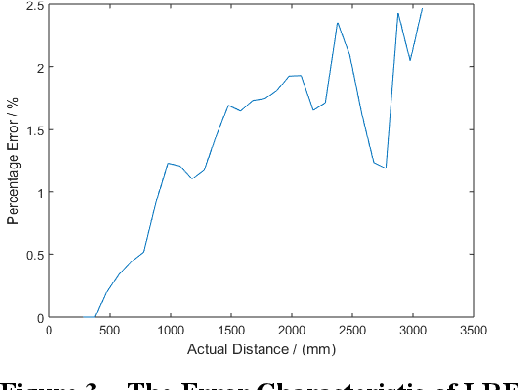
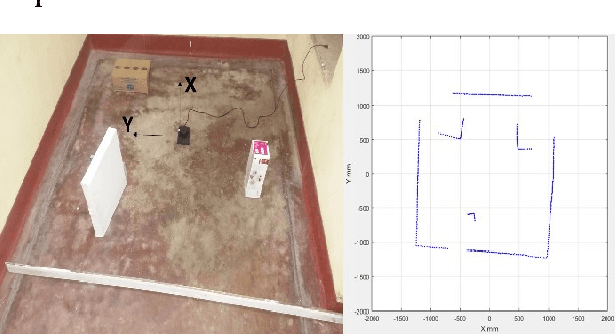
Abstract:This work describes the implementation of a simple and computationally efficient Intelligent Navigation System (INS) for autonomous systems used in areas where human access is impossible. The system uses Laser Range Finder (LRF) readings as input, making it suitable for mobile platform implementation. The INS pre-processes the LRF readings to remove noise and determines an obstacle-free path for mapping. The system's localization method uses a similarity transform and particle filter. The system was tested in artificially generated environments and emulated in real-time with real-environment data. The system was then implemented in a Raspberry Pi3 on a 3WD Omni-directional mobile platform and tested in real environments. The system was able to generate an accurate 2D map of the area. The proposed methodology was shown to be efficient through a comparative analysis of execution time.
Object Dimension Extraction for Environment Mapping with Low Cost Cameras Fused with Laser Ranging
Feb 01, 2023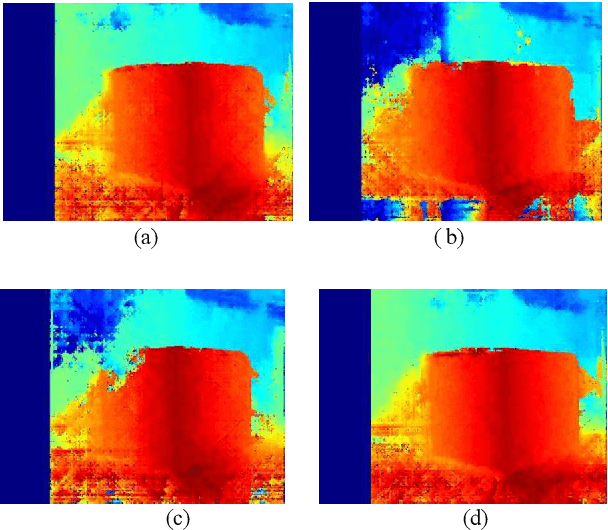
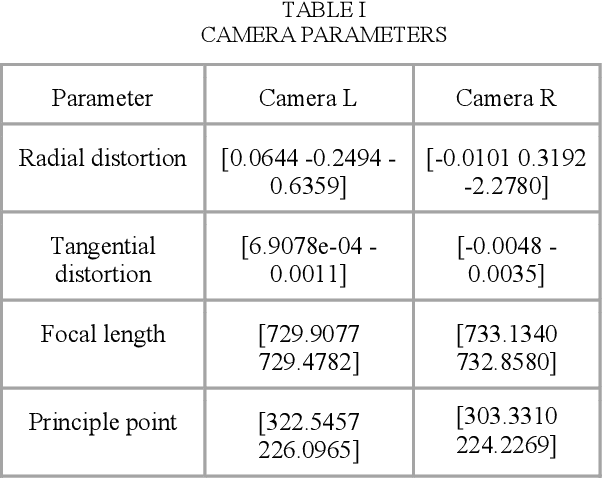
Abstract:It is essential to have a method to map an unknown terrain for various applications. For places where human access is not possible, a method should be proposed to identify the environment. Exploration, disaster relief, transportation and many other purposes would be convenient if a map of the environment is available. Replicating the human vision system using stereo cameras would be an optimum solution. In this work, we have used laser ranging based technique fused with stereo cameras to extract dimension of objects for mapping. The distortions were calibrated using mathematical model of the camera. By means of Semi Global Block Matching [1] disparity map was generated and reduces the noise using novel noise reduction method of disparity map by dilation. The Data from the Laser Range Finder (LRF) and noise reduced vision data has been used to identify the object parameters.
Single-target mineral detection with site-specific endmember extraction for survey points identification: A case study of Jaffna, Sri Lanka
Sep 06, 2021Abstract:As field surveys used for manual lithological mapping are costly and time-consuming, digital lithological mapping (DLM) that utilizes remotely sensed spectral imaging provides a viable and economical alternative. Generally, DLM has been performed using spectral imaging with the use of laboratory-generated generic endmember signatures. To that end, this paper proposes generating a single-target abundance mineral map for DLM, where the generated map can further be used as a guide for the selection or avoidance of a field survey. For that, a stochastic cancellation-based methodology was used to generate a site-specific endemic signature for the mineral in concern to reduce the inclusive nature otherwise present in DLM. Furthermore, a soil pixel alignment strategy to visualize the relative purity level of the target mineral has been introduced in the proposed work. Then, for the method validation, mapping of limestone deposits in the Jaffna peninsula of Sri Lanka was conducted as the case study using satellite-based spectral imaging as the input. It was observed that despite the low signal-to-noise ratio of the input hyperspectral data the proposed methodology was able to robustly extract the rich information contained in the input data. Further, a field survey was conducted to collect soil samples of four sites chosen by the proposed DLM from the Jaffna peninsula as an algorithm validation and to demonstrate the application of the proposed solution. The proposed abundance threshold of 0.1 coincided with the industrial standard X-ray diffraction (XRD) threshold of 5% for the mineral presence. The results of the XRD test validated the use of the algorithm in the selection of sites to be surveyed, hence could avoid conducting a costly field survey on the assumption of the existence of a mineral.
Transmittance Multispectral Imaging for Reheated Coconut Oil Differentiation
Aug 28, 2021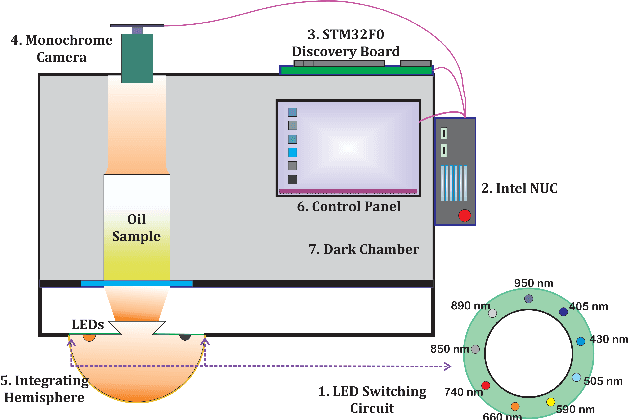

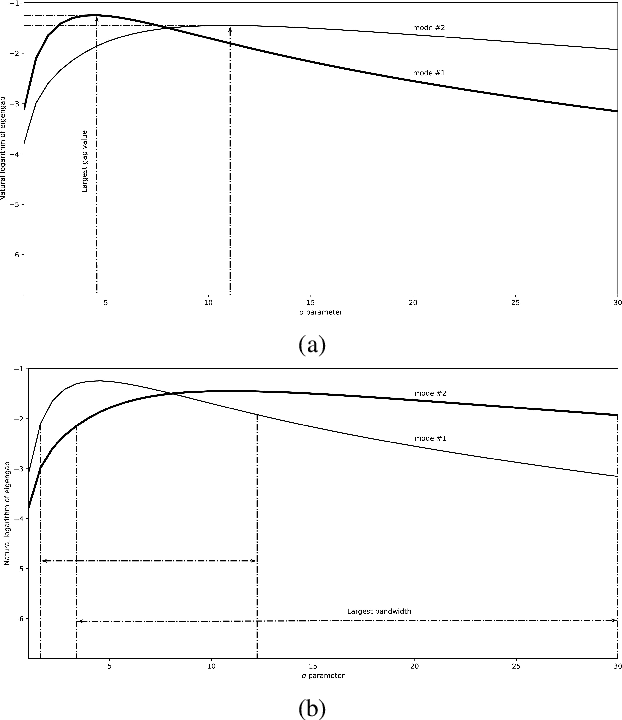

Abstract:Multispectral imaging systems (MISs) have been used widely to analyze adulteration and toxin formation in oil, yet a dearth of attention has been tendered to oil reheating and reusing despite the consumption of such debased oil being deleterious. To that end, the paper discusses the application of MISs to estimate the 'reheat cycle count classes' (number of times an oil sample is recursively heated) and to identify 'critical classes' at which substantial changes in the oil sample have materialized. The MIS captures the transmittance spectrum of the translucent specimen as opposed to other multispectral imaging research which often measures the reflected light from opaque solid samples. Firstly, the reheat cycle count class is estimated with Bhattacharyya distance between the reheated and a pure oil sample as the input. The classification was performed using a support vector machine classifier that resulted in an accuracy of 83.34 % for reheat cycle count identification. Subsequently, to distinguish critical classes under reheating, an unsupervised clustering procedure was introduced using a modified spectral clustering (SC) algorithm. In addition, laboratory experiments were performed to ascertain the ramifications of the reheating process with a chemical analysis. The chemical analysis of the coconut oil samples used in the experiment yielded that a statistically significant change (p < 0.05) had taken place in the chemical properties with reheating and the results of the proposed SC framework were deemed to coincide with the chemical analysis results.
Constrained Nonnegative Matrix Factorization for Blind Hyperspectral Unmixing incorporating Endmember Independence
Apr 03, 2020

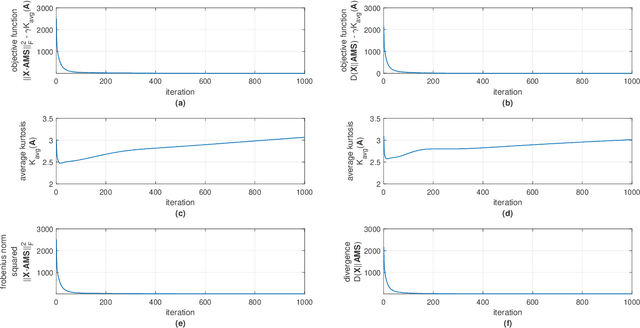

Abstract:Hyperspectral unmixing (HU) has become an important technique in exploiting hyperspectral data since it decomposes a mixed pixel into a collection of endmember spectra weighted by fractional abundances. The endmembers of a hyperspectral image (HSI) are more likely to be generated by independent sources and be mixed in a macroscopic degree before arriving at the sensor element of the imaging spectrometer as mixed spectra. Over the past few decades, many attempts have focused on imposing auxiliary constraints on the conventional nonnegative matrix factorization (NMF) framework in order to effectively unmix these mixed spectra. As a promising step toward finding an optimum constraint to extract endmembers, this paper presents a novel blind HU algorithm, referred to as Kurtosis-based Smooth Nonnegative Matrix Factorization (KbSNMF) which incorporates a novel constraint based on the statistical independence of the probability density functions of endmember spectra. Imposing this constraint on the conventional NMF framework promotes the extraction of independent endmembers while further enhancing the parts-based representation of data. The proposed algorithm manages to outperform state of the art NMF-based algorithms in terms of extracting endmember spectra from hyperspectral data; therefore, it could uplift the performance of recent deep learning HU methods which utilizes the endmember spectra as supervisory input data for abundance extraction.
 Add to Chrome
Add to Chrome Add to Firefox
Add to Firefox Add to Edge
Add to Edge